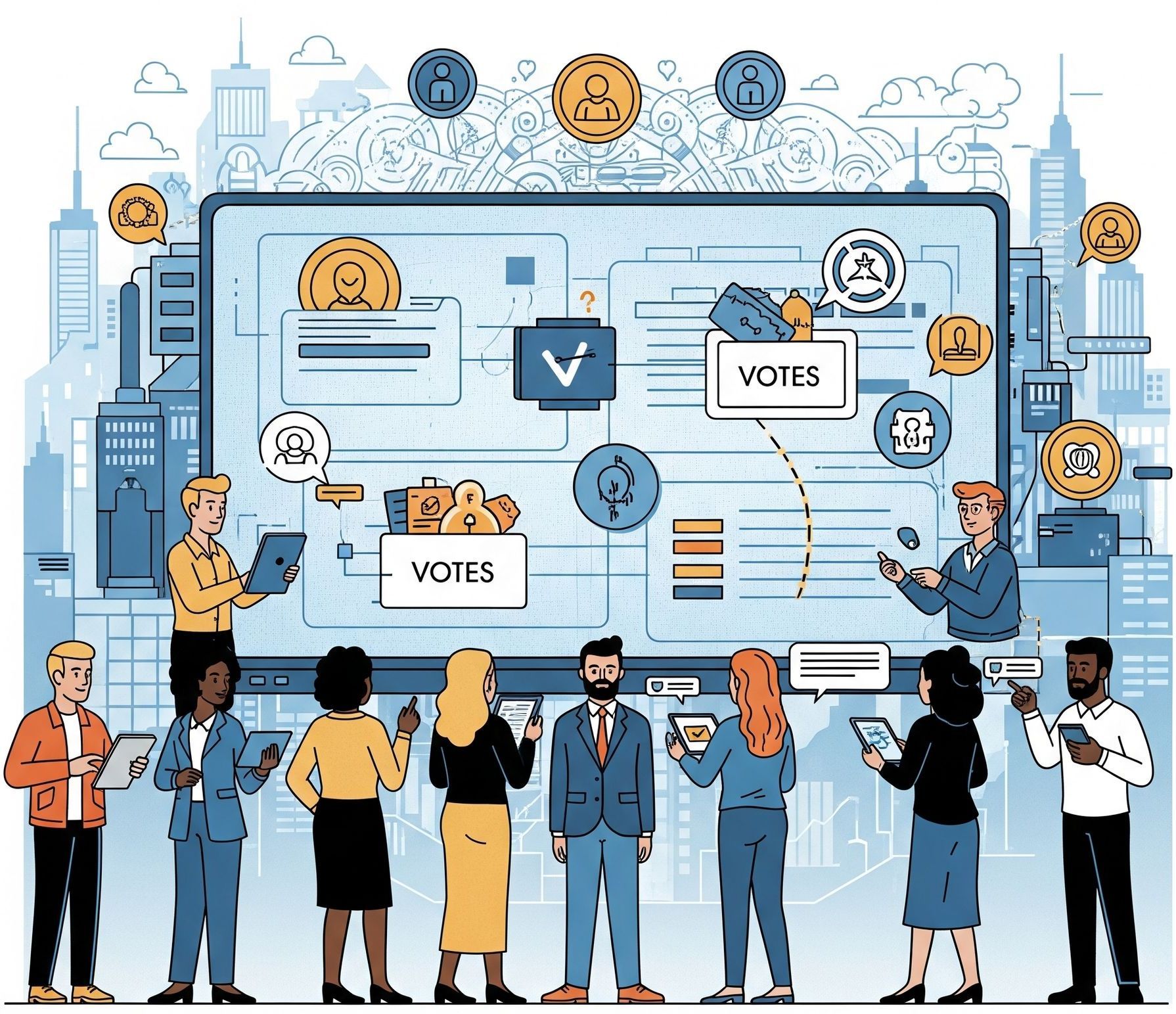Thriving in the Age of Amazon: How Retailers Can Win
The retail apocalypse is still alive, but there are opportunities for retailers to thrive. As of the end of October 2024, retailers in the United States had announced nearly 6,200 store closures for the year, This marked the highest number of closures since 2020 and reflects an evolving consumer landscape where shoppers are increasingly budget-conscious and prioritize experiences over material goods.
Who can survive and thrive in this environment?

The Retail Apocalypse Is Still Well Alive
The retail sector is undergoing a period of significant transformation. Macy's recent announcement to close 66 stores1, as part of its "Bold New Chapter" strategy aimed at restoring profitability, is just one example of the ongoing upheaval. While this news, coupled with a cautious sales outlook, may not have surprised investors, it represents only the latest in a long list of store closures by big retail chains.
Some weeks earlier, the US pharmacy giant Walgreens disclosed2 it would close 1,200 stores across the United States in the next three years, as part of its turnaround effort. In March 2023 Nordstrom said3 it would completely wind down its operations in Canada, laying off about 2,500 workers. In 2021, Gap announced4 that it would close roughly 350 stores over a three-year period, or about 43% of its North American Gap and Banana Republic locations, drastically reducing its presence in malls and strip centers. Bed Bath & Beyond faced a more dire outcome, filing for bankruptcy5 on April 23, 2023, and shuttering all its locations.
As of the end of October 2024, retailers in the United States had announced nearly 6,200 store closures for the year, compared to 5,300 new store openings6. This marked the highest number of closures since 2020 and reflects an evolving consumer landscape where shoppers are increasingly budget-conscious and prioritize experiences over material goods.
While the COVID-19 pandemic and subsequent inflationary pressures have exacerbated these challenges, the difficulties faced by the retail sector predate these events. As early as 2017, with the demise of Toys R Us and the struggles of Sears and JC Penney, industry operators coined the term "Retail Apocalypse"7, attributing this phenomenon to the rise of e-commerce and the growing dominance of Amazon, which was estimated to be responsible for half of all growth in the industry8.
This raises crucial questions about the future of retail: is e-commerce still an existential threat, or has it become a potential opportunity? If so, are certain segments of the market more resilient than others?
This article delves into these questions, exploring the strategies retailers can employ to navigate this evolving landscape and achieve sustainable success.
Product Characteristics and E-commerce Resilience
Even with the rise of e-commerce and the disruptions of the past decade, certain retail segments continue to demonstrate resilience.
The following chart9 illustrates e-commerce penetration across various product categories in the United States (measured as percentage of total retail sales), along with Amazon's market share within those categories (measured by Gross Merchandise Value). The chart reveals significant variations in e-commerce penetration. In addition, in some categories, Amazon, despite controlling 45% of the overall online retail market in the United States, holds a relatively smaller share.
This resilience can be attributed to several key product characteristics:
- Perishability: Products with a limited shelf life (usually lower than one year) are less conducive to online sales.
- Sensory Experience: Products that require touch, smell, or physical interaction before purchase benefit from in-person evaluation.
- Differentiation: Products with high variability in taste, color, quality, or functionality are less susceptible to online disruption.
- Novelty: Products with a high degree of newness or rapid obsolescence often require in-person exploration.
- Logistics: Bulky, heavy, fragile, or hazardous products present logistical challenges for online fulfillment and delivery.
- Service Component: Products that require complementary services, such as installation or repair, often benefit from a physical retail presence.
These characteristics create inherent barriers to online penetration, affording certain retailers a degree of protection from e-commerce disruption.
The Bezos Blueprint: Understanding Amazon's Origins
The extent to which Amazon, and online retailers in general, can penetrate a market is intrinsically linked to the nature of the products being sold.
To illustrate this, let's examine Jeff Bezos's strategic decision to launch Amazon by initially selling books. In a 1998 speech10, Bezos explained his rationale:
“I made a list of 20 different products that you might be able to sell online. I was looking for the first best product, and I chose books for lots of different reasons, but one primary reason. And that is that there are more items in the book space than there are items in any other category by far. There are over 3 million different books worldwide in all languages. The number two product category in that regard is music, and there are about 300,000 active music CDs. And when you have this huge catalog of products, you can build something online that you just can’t build any other way. The largest physical bookstores, the largest superstores, and these are huge stores, often converted from bowling alleys and movie theaters, can only carry about 175,000 titles. There are only a few that large. In our online catalog, we’re able to list over two and a half million different titles and give people access to those titles”.
Bezos recognized that books offered several advantages for e-commerce:
- Vast Selection: Online bookstores could offer a far greater selection than physical stores.
- Longevity: Books have a long shelf life.
- Standardization: Books are relatively standardized in size and format.
- Durability: Books are generally resilient to damage during shipping.
These characteristics made books an ideal product for early e-commerce. The same principles applied to music CDs, the next category Amazon expanded into. Contrast this with products like the latest L'Oréal Pro Matte Gloss Infallible lipstick, available in numerous colors, which will go out of fashion in a matter of months and has a high likelihood of discontinuation. Or consider the need to test a fragrance in person before buying it, or the logistical challenges of delivering a 50-pound grill to a customer’s doorstep and do it at scale.
These examples highlight why certain retail categories enjoy greater protection from online competition than others (consumer electronics for instance). This relative insulation has, in turn, afforded these retailers more time to adapt to e-commerce and enhance their competitive strategies. It is therefore crucial to recognize that product characteristics alone do not guarantee success. Even retailers operating in less e-commerce-susceptible categories must actively evolve to thrive in the modern retail landscape. A multifaceted approach is required, encompassing various strategies to strengthen customer relationships and differentiate themselves from online competitors.
Strategies for Competitive Advantage in Modern Retail
To thrive in today's competitive retail environment, companies need to adopt a multifaceted approach. First, specialization and depth of selection are key. By focusing on a specific product category and offering an extensive assortment within that niche, retailers can cater to diverse customer needs and become the go-to destination for their chosen market. A comprehensive online presence further enhances this strategy, providing customers with easy access to the full product catalog.
Ulta Beauty exemplifies this approach. With over 1,400 stores and a robust online platform, Ulta offers more than 25,000 beauty products from over 600 brands, including up-and-coming names and private labels. Building such a comprehensive catalog creates a significant barrier to entry, even for online giants.
Wholesale clubs like Costco and BJ's Wholesale present an alternative model. They curate a limited selection of only 3,000-4,000 high-quality items, offering them at competitive prices, while membership fees are ensuring a minimum profitability.
Second, reliable fulfillment is crucial. Retailers must be able to efficiently deliver on their promises, whether through a network of physical stores or a robust distribution infrastructure. This necessitates a shift in capital allocation, prioritizing investments in supply chain and technology over traditional store expansion.
Walmart's transformation illustrates this shift. In 2014, the company allocated 71% of its US capital expenditures to store operations. By 2024, this percentage had decreased to 33%, with 67% now directed towards information systems, distribution, and digital initiatives. This strategic realignment clearly underscores the growing importance of supply chain optimization and technological innovation in modern retail.
Omnichannel Strategy and the Importance of Service
This omnichannel approach must also incorporate services like home delivery and buy-online-pick-upin-store (BOPIS), which have become essential to the modern consumer experience. However, these services often come with higher costs. Retailers must find ways to implement them efficiently without significantly impacting profitability.
Tractor Supply CEO, Harry Lawton, addressed this challenge during a recent Investor Day presentation: "I think what most folks have learned is that on the consumer side, it's tough to get compensated for delivery, but on the business side you can do so when you've got the right route delivery optimization."
Tractor Supply's strategy involves offering low-cost delivery not universally, but specifically to "highvalue" customers, such as farm professionals with high recurring spending. This targeted approach mirrors Home Depot's strategy, which offers preferential delivery terms to professional contractors while charging variable rates for regular customers.
This focus on high-value customers allows retailers to foster stronger relationships and differentiate themselves from Amazon, which prioritizes transactional interactions with its customers.
As Colin Yankee, Tractor Supply's Chief Supply Chain Officer, explained:
"We're delivering mobile pallets of animal feed, pallets of shavings, 16-foot fence panels, stall mats, which are heavy and awkward to move around, riding lawn mowers, stock tanks. And when we're doing that, we're having to get past the customers' property gate, driving down a 0.25-mile-long gravel driveway. We're dropping products in their tack rooms around their animals. And we're dropping products out on fields where they're working on projects. […] In the markets where we have TSC delivery, our customers know their driver and have a relationship with that driver just like they do with our team members in our stores. Being a trusted regular presence on a customer's property, especially around their animals is a differentiator for delivering legendary service."
This personalized delivery service, tailored to the specific needs of their core customer base, exemplifies how retailers can leverage service to build loyalty and competitive advantage. However, curated delivery is just one of many service offerings that retailers can utilize to connect with customers and stand out from the competition.
Experiences, Loyalty, and the Power of Community
Beyond core product offerings and efficient fulfillment, retailers can leverage additional features and services to cultivate deeper customer relationships. By providing valuable experiences and fostering a sense of community, retailers can differentiate themselves and build lasting loyalty.
Ulta Beauty, for example, enhances its in-store experience with a range of services, such as hair styling, coloring, waxing, brow shaping, makeup application, skin care treatments and ear piercing. Similarly, Home Depot offers value-added services such as repairs and minor installations. Lululemon goes a step further, fostering a community around its brand by organizing workout classes, running groups, tailored shopping appointments and exclusive events for members.
Even discount retailers like TJX, Ross Stores, and Burlington create a unique in-store experience by offering a "treasure hunt" atmosphere, where customers can discover discounted brand-name merchandise. This strategy not only attracts customers but also entices more brands to partner with these retailers, further enhancing their product offerings11.
Membership Programs and Data-Driven Personalization
Membership programs, whether free or fee-based, provide another avenue for building customer relationships. By offering exclusive benefits like discounts, special offers, and early access to new products, retailers can incentivize loyalty and gather valuable customer data. BJ's Wholesale Club, for instance, claims that its members save on average ten times the cost of their annual membership fee. This data-driven approach allows retailers to personalize their communication strategies and tailor their offerings to individual customer preferences.
Furthermore, advancements in big data and artificial intelligence enable retailers to analyze customer data more effectively and optimize inventory management. By strategically allocating products based on purchasing patterns, retailers can ensure that customers consistently find what they need, leading to increased satisfaction and repeat business. This, in turn, allows retailers to reduce waste, lower working capital requirements, and enhance profitability in the long run.
Starbucks' Rewards program, with over 40 million active members, exemplifies the power of loyalty programs. In fact, the company estimates that the program contributes to nearly 60% of its annual revenue.
The Benefits of Customer-Centricity
These customer-centric strategies not only benefit investors but also create positive ripple effects throughout the entire retail ecosystem. Increased profitability allows retailers to invest in their employees, expand their operations, and contribute to the economic well-being of the communities they serve. This is particularly impactful for retailers with a strong presence in suburban and rural areas, like Ulta Beauty and Tractor Supply.
Moreover, a deep understanding of customer preferences can drive product innovation. Private-label brands, once considered a value alternative to national brands, are now increasingly sophisticated and sought-after. A McKinsey survey found12 that 60% of consumers would continue to purchase privatelabel products even if price were not a factor.
The Intangible Value of Loyalty
Ultimately, customer trust and loyalty are what truly enable a retail company to fend off online competitors. Yet, a company's financial statements often fail to reflect these crucial attributes. Intangible assets like customer relationships rarely appear on the balance sheet (unless acquired through an acquisition) and remain largely hidden within the company's daily operations. Therefore, it is impossible for investors to identify a sustainably successful retailer simply by reviewing its annual reports.
While a company's competitive advantage ultimately manifests as higher revenues, profits, and cash flow, these results often take years to materialize. Even then, it can be difficult to isolate the specific factors driving this improved performance. Only through a comprehensive analysis of a retailer's operations, including its customer-centric initiatives, can investors truly appreciate its ability to thrive over the long term.
Conclusion
Analyzing the inherent characteristics of a retailer's product offerings is a crucial first step in assessing its potential for success in today's competitive environment. This alone is not sufficient to guarantee long-term viability. To truly challenge Amazon and other online players, and achieve lasting success, retailers must cultivate strong customer loyalty and build a brand that occupies a prominent place in consumers' mind.
Several strategies can help retailers achieve this goal:
- Omnichannel Excellence: Seamlessly integrating online and offline channels, including leveraging existing stores and distribution centers to create an efficient multi-channel strategy.
- Strategic Focus: Specializing in a niche category or offering a curated selection of high-value products.
- Value-Added Services: Providing ancillary services that enhance customer experience and foster loyalty.
- Membership Programs: Implementing membership programs to reward loyal customers and gather valuable data.
- Product Innovation: Developing new products and private-label brands that cater to evolving customer needs.
The retailers mentioned in this article, led by the acumen of their management teams, have demonstrated that success in the ever-changing retail environment is indeed possible. It is now up to investors to identify the fundamental elements that contribute to a company's successful and sustainable operating model.
______________________
REFERENCES
1: https://www.macysinc.com/newsroom/news/news-details/2025/Macys-Inc.-Confirms-Planned-Macys-Store-Closures/default.aspx
2: https://www.businessinsider.com/walgreens-pharmacy-closing-1200-stores-turnaround-effort-2024- 10 utm_medium=referral&utm_source=yahoo.com
3: https://www.wsj.com/articles/nordstrom-to-close-liquidate-its-canadian-stores-2c1aa7fb
4: https://www.retaildive.com/news/with-plans-for-350-store-closures-gap-flees-the-mall/587621/
5: https://www.wsj.com/articles/bed-bath-beyond-files-for-bankruptcy-cc7e8b40
6: https://www.cnn.com/2024/10/25/business/the-retail-apocalypse-is-back/index.html
7: https://www.theatlantic.com/business/archive/2017/04/retail-meltdown-of-2017/522384/
8: https://www.businessinsider.com/retail-apocalypse-amazon-accounts-for-half-of-all-retail-growth-2017-11
9: https://www.oberlo.com/statistics/us-ecommerce-market-share; https://www.emarketer.com/content/amazon-us-ecommerce-sales-byproduct-category-2023; https://www.forbes.com/sites/michelleevans1/2023/08/08/how-amazon-came-to-dominate-the-us-beauty-ecommerce-market/; https://www.oberlo.com/statistics/top-ecommerce-categories
10: https://www.youtube.com/watch?v=PnSjKTW28qE
11: https://www.wsj.com/real-estate/commercial/burlington-sees-the-future-of-retail-it-looks-much-smaller-704da00e
12: https://www.wsj.com/video/series/in-depth-features/why-americas-biggest-retailers-are-racing-to-expand-their-storebrands/6ADF1EF7-53F4-41A7-BCC1-8EB5D14DB3D2?mod=business_videos_pos2
Disclaimer:
This article is for informational purposes only and does not constitute investment advice. Borealis GAM may be invested in the securities of companies mentioned herein, creating a potential conflict of interest. While we strive for objective analysis, this should be considered. Past performance is not indicative of future results, and all investments carry risk, including loss of principal. Consult a financial advisor before making investment decisions. The information provided is based on our opinions and current holdings, which are subject to change without notice, and we make no warranties as to its accuracy or completeness.







